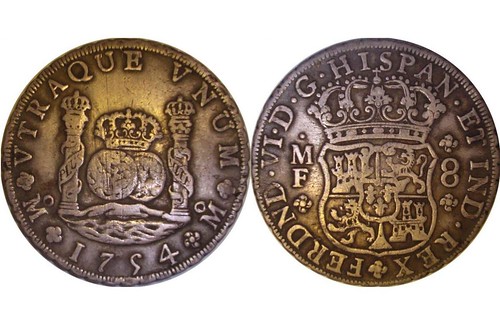
PREV ARTICLE
NEXT ARTICLE
FULL ISSUE
PREV FULL ISSUE
MORE ON HAMILTON AND SILVER FINENESSR.W. Julian submitted these notes on the fineness of the silver in early U.S. coinage and the exchange of U.S. silver dollars for Spanish dollars in the Caribbean. Thank you! -Editor
NOTES ON THE GOLD/SILVER RATIO AND ARBITRAGE
In the E-Sylum of February 4 Craig Sholley and Harry Salyards (S&S) reported that they were working on an article to refute one that appeared in the ANS Magazine of January 2024. The ANS article claimed that Alexander Hamilton, in his 1791 report on the coinage, had badly misjudged the situation and even the 15 to 1 ratio for silver to gold was wrong. I also saw the ANS article and sent a note to the editor several weeks ago pointing out serious flaws. S&S correctly note, using figures published by the 1878 monetary conference, that Hamilton did get the ratio right. The U.S. Mint Reports of later years, on the other hand, used the figures compiled by Dr. Adolph Soetbeer and these generally agree with the S&S report. (Soetbeer: 1789: 14.75 to 1, 1790: 15.04 to 1, 1791: 15.05 to 1, 1792: 15.17 to 1, 1793: 15 to 1, and 1794: 15.37 to 1. After 1794 the ratios were well above 15 to 1.) S&S then discuss other topics, including the exchange (arbitrage) of U.S. silver dollars for Spanish dollars in the Caribbean. It has long been an article of faith that this was a common practice, the Spanish dollars being needed for the Orient trade. S&S strongly doubt that the arbitrage was carried on to any extent and use the silver deposits at the Philadelphia Mint in the early 1800s to prove their point. However, S&S seem to be unaware of a flaw in this argument. The main source for Spanish dollars in this country prior to 1806 was the Bank of the United States and it refused until 1805 to send these dollars to the Mint for recoinage. The reason for this was economic and had nothing to do with arbitrage. The Bank rule about not depositing Spanish dollars was relaxed in November 1802 for a short time. Mint Director Elias Boudinot, as a result of an agreement with Bank president Thomas Willing, was allowed to draw on the Spanish dollars for personal deposits at the Mint; the last such deposit was made in July 1803. One of these special deposits, of January 4, 1803, enables us to determine the specifics of Spanish dollars in a particular case. This deposit shows the average gross weight to be 415.72 grains, the fineness .893, and the pure silver content at 371.26 grains. (The U.S. dollar contained 371.25 grains of pure silver.) I have also seen other results which match the S&S figure of 372.4 grains The special Bank rule about Spanish dollars was revoked in May 1805 as the result of an agreement between Director Boudinot and the Bank president. The revocation thus had nothing to do with the political and military events noted by S&S for October 1805. One point not mentioned in the ANS article or by S&S is the fact that the actual fineness of U.S. gold coinage of the 1790s was .910, not the legal .916 2/3. It changed the ratio slightly and would have had some effect with European bullion dealers where better refining methods were available.
To read the earlier E-Sylum article, see:
Wayne Homren, Editor The Numismatic Bibliomania Society is a non-profit organization promoting numismatic literature. See our web site at coinbooks.org. To submit items for publication in The E-Sylum, write to the Editor at this address: whomren@gmail.com To subscribe go to: https://my.binhost.com/lists/listinfo/esylum All Rights Reserved. NBS Home Page Contact the NBS webmaster 
|

